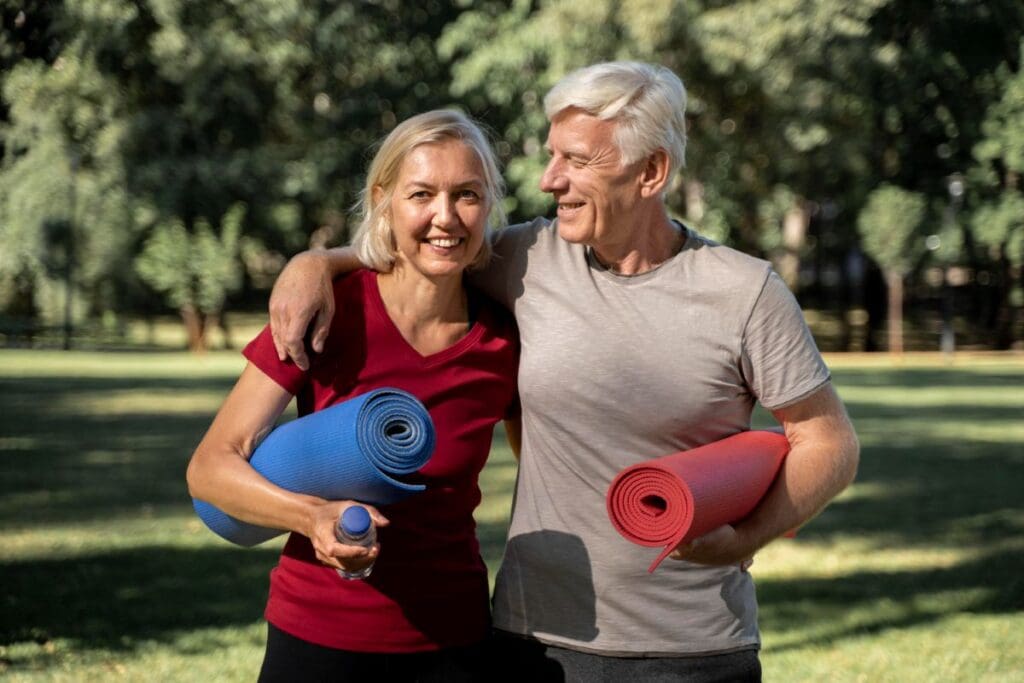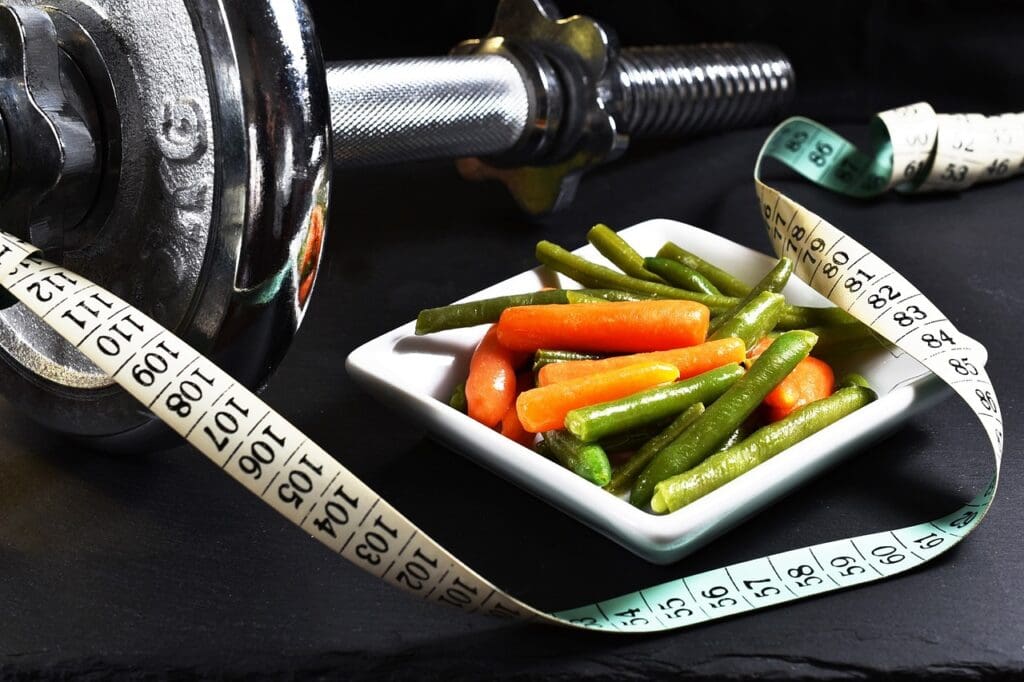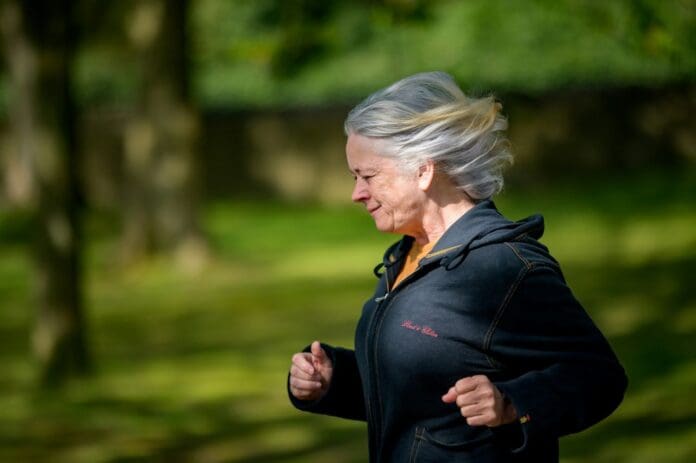Regular exercise has a positive impact on life expectancy, potentially adding several years to a person’s lifespan. Studies have shown that moderate to vigorous physical activity can reduce the risk of early death and extend life expectancy, especially for those who are not currently active.
How Exercise Impacts Life Expectancy:
Reduced Risk of Death:
Studies have found that engaging in physical activity can significantly reduce the risk of all-cause mortality, as well as mortality from cardiovascular disease and non-cardiovascular diseases.
Increased Life Expectancy:
Participants who followed recommended physical activity guidelines, such as 150-300 minutes per week of moderate-intensity or 75-150 minutes per week of vigorous-intensity activity, experienced an increase in life expectancy.
Benefits Across Different BMI Levels:
Regular exercise has been shown to extend life expectancy in individuals across different Body Mass Index (BMI).
Greater Benefits for Less Active Individuals:
The most significant gains in life expectancy were observed among individuals who were initially less active, highlighting the importance of incorporating physical activity into daily routines, as suggested by a study published in the British Journal of Sports Medicine.
Optimal Exercise Amount:
Research suggests that moderate exercise (e.g., brisk walking) may be sufficient to achieve significant longevity benefits. For example, 150 minutes or more of exercise per week has been associated with an increase in life expectancy of about 7 years compared to individuals who did not engage in regular exercise.
Benefits of Interactive Sports:
Studies have shown that activities like tennis, badminton, and soccer, which involve interaction with others, may be associated with a longer lifespan compared to exercising solo.
Potential to Increase Life Expectancy:
Studies have estimated that if all Americans over 40 have as much physical activity as the most active 25% of the population, their average lifespan could increase by over 5 years. For the least active 25%, this could translate to an increase of up to 11 years.
Important Considerations:
Consistency is Key:
To reap the benefits of exercise on life expectancy, it’s important to maintain a consistent exercise routine.
Individualized Exercise:
The optimal amount and type of exercise can vary depending on individual factors such as age, health condition, and personal preferences.
Combine with Healthy Lifestyle:
Exercise should be combined with other healthy lifestyle choices, such as a balanced diet, adequate sleep, and stress management, for optimal health outcomes.

Workouts for Teens:
Workouts for teens should include a mix of aerobic activities, strength training, and flexibility exercises. Examples include running, swimming, dancing, push-ups, squats, lunges, and yoga. It’s important to incorporate regular physical activity, aiming for at least 60 minutes of moderate to vigorous intensity exercise daily.
Aerobic Activities:
- Running: Provides cardiovascular benefits and can be done at various levels of intensity.
- Swimming: A low-impact activity that works multiple muscle groups and is easy on joints.
- Dancing: A fun way to get your heart rate up and improve coordination and flexibility.
- Biking: A good way to get outdoors and enjoy the scenery while working your leg muscles.
Strength Training:
- Push-ups: A bodyweight exercise that works the chest, shoulders, and triceps.
- Squats: Another compound exercise that targets the legs and glutes.
- Lunges: These are an effective bodyweight exercise for strengthening the legs and core.
- Core Workouts: Exercises like planks, crunches, and leg raises can strengthen the abdominal muscles.
- Weightlifting: Furthermore, teenagers can benefit from light weightlifting with high repetitions to build muscle.
Flexibility Exercises:
- Yoga: A great way to improve flexibility, balance, and strength, while also promoting relaxation and mental well-being.
- Stretching: Incorporating stretches after workouts helps improve flexibility and reduce muscle soreness.
Other Activities:
- Warm-up: Always start with a warm-up to prepare the body for exercise.
- Proper Form: Focus on maintaining good form during exercises to avoid injuries.
- Listen to Your Body: Rest when needed and don’t push yourself too hard, especially when starting a new workout routine.
- Variety: Mix up your workouts to keep them interesting and to work different muscle groups.
- Consistency: Regular exercise is the key to success.
Workouts in Your 20s for Exercise and Life Expectancy:
In your 20s, prioritize building a strong foundation for future health by incorporating both strength training and aerobic exercise into your routine. Aim for at least two days of strength training per week, focusing on all major muscle groups, and 150 minutes of moderate-intensity aerobic activity or 75 minutes of vigorous-intensity activity. Consider incorporating interval training or circuit training for added benefits.
Strength Training:
- Focus: Building muscle mass and bone strength.
- Frequency: 2-3 days per week, focusing on all major muscle groups (legs, hips, back, abs, chest, shoulders, arms).
- Examples: Bodyweight squats, lunges, push-ups, deadlifts, bench press, planks, and exercises using dumbbells or other weight equipment.
- Progression: Also after you get stronger, gradually increase the weight, reps, or sets you perform.
Cardio/Aerobic Exercise:
- Focus: Improving cardiovascular health and endurance.
- Frequency: Aim for 150 minutes of moderate-intensity or 75 minutes of vigorous-intensity activity per week.
- Examples: Brisk walking, running, cycling, swimming, dancing, or even taking the stairs instead of elevators.
- Consider Interval Training: Alternate between periods of high-intensity and moderate-intensity activity.
Additional Considerations:
- Warm-up and Cool-down: Always include a warm-up before each workout and a cool-down afterwards.
- Mobility and Flexibility: Incorporate exercises like yoga, Pilates, or dynamic stretching to improve your range of motion and prevent injuries.
- Listen to Your Body: Take rest days when needed and don’t push yourself too hard, especially when starting a new workout routine.
- Enjoy the Process: Choose activities you enjoy to make exercise a sustainable habit.

Workouts in Your 30s for Exercise and Life Expectancy:
Working out in your 30s is crucial for maintaining overall health and well-being as your metabolism naturally slows down and muscle mass can decrease. Incorporating a balanced workout routine that includes strength training, cardiovascular exercise, and flexibility activities can help counteract these age-related changes and promote long-term health.
Why Exercise is Important in Your 30s for Exercise and Life Expectancy:
- Counteracting Age-Related Changes: Metabolism slows down, and muscle mass can decline, making it harder to maintain a healthy weight and body composition.
- Maintaining Bone Density: Bone density naturally declines after age 30, so incorporating strength training can help slow this process and reduce the risk of osteoporosis.
- Improved Heart Health: Regular exercise strengthens the heart and improves cardiovascular health, reducing the risk of heart disease.
- Disease Prevention: Physical activity can help lower the risk of chronic diseases like diabetes, Alzheimer’s, and certain types of cancer.
- Improved Sleep and Energy Levels: Exercise can boost energy levels and improve sleep quality.
- Mental Health Benefits: Also physical activity releases endorphins, which can help reduce stress and improve mental well-being.
Tips for Effective Workouts in Your 30s:
- Prioritize Strength Training: Incorporate strength training exercises that target major muscle groups to help maintain and build muscle mass.
- Include Cardiovascular Exercise: Choose activities like running, swimming, or cycling to improve heart health and overall fitness.
- Add Flexibility and Balance: Include yoga, Pilates, or other activities that improve flexibility and balance to reduce the risk of falls and injuries.
- Listen to Your Body: Pay attention to your body’s signals and take rest days when needed to prevent overtraining and injuries.
- Mix It Up: Vary your workout routine to keep things interesting and challenge your body in different ways.
- Make it a Habit: Consistency is key! Aim for at least 150 minutes of moderate-intensity exercise or 75 minutes of vigorous-intensity exercise per week.
- Consult with Professionals: If you have any health concerns or are new to exercise, consult with a doctor or certified personal trainer.
By incorporating these strategies into your workout routine, you can stay fit and healthy in your 30s and beyond.
Workouts in Your 40’s for Exercise and Life Expectancy:
In your 40s, prioritize a balanced exercise routine that includes strength training, cardio, and flexibility activities. Focus on building muscle mass and improving cardiovascular health, while also incorporating physical activity that enhances balance and mobility.
Key Components of Exercise in Your 40s for Exercise and Life Expectancy:
- Strength Training: Aim for 2-3 sessions per week, focusing on exercises that target all major muscle groups. This helps maintain and build muscle mass, which declines naturally with age.
- Cardiovascular Exercise: Aim for at least 150 minutes of moderate-intensity cardio (like brisk walking, jogging, or swimming) or 75 minutes of vigorous-intensity cardio (like running or cycling) per week.
- Flexibility and Mobility: Incorporate exercises like yoga or stretching to improve flexibility and range of motion. This can help prevent injuries and maintain mobility, especially as you age.
- Balance Exercises: As you get older, balance can become more challenging. Incorporate exercises like balance board workouts or standing on one foot to improve stability and reduce the risk of falls.
- Consistency: Regular exercise is crucial for long-term health and well-being. Aim to make exercise a regular part of your daily routine, even if you start slowly and gradually increase the duration and intensity of your workouts.
Sample Exercise Routine:
- Monday: Strength training (focus on upper body)
- Tuesday: Cardio (brisk walking or jogging)
- Wednesday: Rest or active recovery (light stretching or yoga)
- Thursday: Strength training (focus on lower body)
- Friday: Cardio (swimming or cycling)
- Saturday: Balance exercises and flexibility (yoga or stretching)
- Sunday: Rest or active recovery (light walk or stretching)
Important Considerations:
- Consult a healthcare professional: Before starting any new exercise program, it’s essential to consult with your doctor, especially if you have any pre-existing health conditions.
- Gradual Progression: Start slowly and gradually increase the intensity and duration of your workouts. This will help your body adapt to the new demands of exercise and reduce the risk of injuries.
- Listen to Your Body: Pay attention to your body’s signals and take rest days when needed. Overexertion can lead to injuries and setbacks.
- Enjoy Your Exercise: Find activities that you enjoy and that fit into your lifestyle. This will make it more likely that you will stick with your exercise program long-term.

Workouts in Your 50’s for Exercise and Life Expectancy:
Physical activity in your 50s can significantly improve overall health and well-being. The CDC recommends at least 150 minutes of moderate aerobic activity or 75 minutes of vigorous activity per week, along with strength training twice a week. Starting with short, manageable workouts and gradually increasing the duration and intensity is key.
Key Considerations for Exercise and Life Expectancy in Your 50’s.
- Consult with your doctor: Before starting any new exercise program, especially if you have any health concerns or pre-existing conditions, it’s essential to consult with your physician.
- Choose activities you enjoy: Finding exercises you find enjoyable is crucial for long-term adherence.
- Focus on strength training: As you age, muscle mass tends to decline, making strength training crucial for maintaining strength and preventing injuries.
- Prioritize low-impact activities: Consider options like walking, cycling, swimming, or dancing, which are easier on the joints.
- Pay attention to form: Correct form is essential to prevent injuries, especially as you get older.
- Stay consistent: Aim for regular exercise sessions, even if they are short, to see and maintain results.
- Listen to your body: Pay attention to any pain or discomfort and adjust your workout accordingly.
- Stay hydrated: Drink plenty of fluids before, during, and after exercise.
- Consider working with a professional: A personal trainer or certified fitness professional can provide guidance and support as you navigate your fitness journey.
Benefits of Exercising in Your 50s:
- Improved cardiovascular health: Regular exercise helps lower blood pressure, reduce the risk of heart disease, and improve overall cardiovascular function.
- Increased bone density: Strength training and weight-bearing activities can help strengthen bones, reducing the risk of osteoporosis and fractures.
- Improved muscle mass and strength: Strength training helps maintain and increase muscle mass, which is important for maintaining mobility and preventing falls.
- Enhanced mental health: Exercise can boost mood, reduce stress, and improve cognitive function.
- Weight management: Regular exercise can help maintain a healthy weight, which is important for overall health.
- Increased energy levels: Exercise can help combat fatigue and increase energy levels.
Examples of Exercises for 50s:
- Walking: A simple and effective way to get moving, suitable for all fitness levels.
- Cycling: A low-impact cardio option that can be done indoors or outdoors.
- Swimming: A great full-body workout that is gentle on the joints.
- Strength training: Includes exercises like squats, lunges, push-ups, and resistance band work.
- Yoga: A great way to improve flexibility, balance, and strength.
- Dancing: A fun and engaging way to get your heart rate up.
Workouts for 60 and Over for Exercise and Life Expectancy:
For people over 60, a combination of strength training, cardio, and flexibility exercises is recommended for maintaining overall health and well-being. Low-impact cardio like walking, cycling, and swimming are good choices, while strength training can be done using bodyweight exercises, resistance bands, or light weights. Also flexibility exercises like yoga and Tai Chi can improve mobility and balance.
Here’s a More Detailed Look at Different Workout Options for Exercise and Life Expectancy:
Cardio:
- Walking: A simple and effective way to improve cardiovascular health, especially beneficial for joint stress.
- Cycling: Low-impact and great for endurance, can be done indoors or outdoors.
- Swimming: Provides a full-body workout with minimal stress on joints.
- Water aerobics: A low-impact option that combines cardiovascular exercise with strength training in the water.
- Rowing: A low-impact, full-body workout that can be adapted for different fitness levels.
Strength Training:
- Bodyweight exercises: Chair squats, single-leg stands, wall push-ups, and stair climbing can be great for building strength.
- Resistance bands: Offer a controlled and adjustable resistance for various exercises.
- Light weights: Dumbbells and other light weights can be used for a variety of strength exercises.
- Machine-based strength training: Using gym equipment like leg presses and chest presses can be a structured way to target specific muscle groups.
- Examples of strength exercises: Squats, lunges, chest presses, rows, and pulldowns.
Flexibility and Balance:
- Yoga: Improves flexibility, balance, and core strength.
- Tai Chi: Another gentle form of exercise that improves balance, coordination, and flexibility.
- Chair yoga: A low-impact option that can be done in a chair, improving flexibility and balance.
- Balance exercises: Standing with feet shoulder-width apart and holding steady can improve balance.
Important Considerations:
- Consult a doctor: It’s always a good idea to check with your doctor before starting a new workout routine, especially if you have any underlying health conditions.
- Listen to your body: Pay attention to your body’s signals and don’t push yourself too hard, especially when starting a new workout.
- Start slowly: Gradually increase the intensity and duration of your workouts as you get more comfortable.
- Find activities you enjoy: Make exercise a part of your daily routine by choosing activities that you find enjoyable and engaging.
By incorporating a variety of exercises and physical activity into your routine, you can stay active, maintain your health, and improve your overall quality of life.

